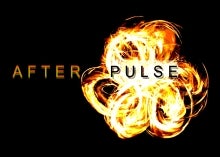(Re-)Membering Pulse: A Foreword

Difficult times. Ethnomusicologists doing what they do best. Writing. Deploying pens, keyboards, making poetry out of pain and memory. Crafting and drafting ethnography, using disciplinary tools. Musicians acting in response. Sia performing. Ethnomusicologists (re-)acting in a performative disjuncture. Ethnomusicologists using weapons to communicate anger and confusion, remorse and compassion. Ethnomusicologists unfolding layers of rage, unleashing artisanals of (re-)actions.
Queer ethnomusicologists. Straight ethnomusicologists. Latinx ethnomusicologists. Ethnomusicologists of color. White and Asian ethnomusicologists . . . We were all present at the Pulse nightclub in Orlando, Florida, on June 12, 2016, when our bodies stopped dancing as mangled bodies were retrieved and identified and mourned and loved. As students of and performers within expressive communities we drew on our collective capacity to be fully present in the lives of a community that was so violently disjunctured. We knew when that it was not yet time to dance again, but we knew when it was time to write. And in this volume of essays we take consolation in the possibility that soon we may again be in a position to accomplish both.
The violence of a ruptured space, an out and queered sonic space filled with fractured lives reminds our vulnerable bodies to claim and articulate our space, to member those spaces and (re-)member them. We need to dance in order to memorialize, to forget, to defracture. Many now are uncomfortable within safe spaces, marked safe spaces. Dance clubs overflow in tribute, in attempts to (re-)member a massacre, a tragedy, a dark, queered space brightened with the rhythms of moving bodies. That many dance to commemorate and celebrate the violence of the fracturing of Pulse seems peculiar while seeming right.
In this volume of essays and reflections, the authors purposefully situate themselves in time and place in order to share the contexts of their reactions, their emotions, their anguish, and frequently their rage. If poetry was their only option for responding . . . bravo. If a list of names was the chosen response . . . bravo. If writing through their grief and horror was healing . . . again, bravo. As ethnomusicologists we expect to act on intellectual mandates to make meaning out of social events that surround us, especially when the expressive culture of our communities are deeply rooted in these experiences. Questions of the positionality of ethnomusicologists—are we activists, are we advocates, are we meddlers—seem trivial. When the dancing stopped at Pulse, we cried, we held on to loved ones, we grieved for a community we quickly realized we all belonged to. And eventually, as ethnomusicologists we gathered our pens together to offer the sounds of our own heartache.
As is true for many authors in this collection, my body too moves through a variety of social spaces, many of them queered spaces. I dance in Uganda. I dance at Pulse. I move through spaces of passion. And my body has unintentionally queered spaces violated by tragedy and violence. The rhythm performed by ethnomusicologists—scholars of bodies engaged in sonic movement—in this volume allows us to consider dancing once again. I for one am not quite ready. But I know that I will eventually get there. And I feel comforted to know that my colleagues will be there with me—with their fantastic tools of ethnography—to welcome me, to guide me, and encourage me back on to the dance floor.





